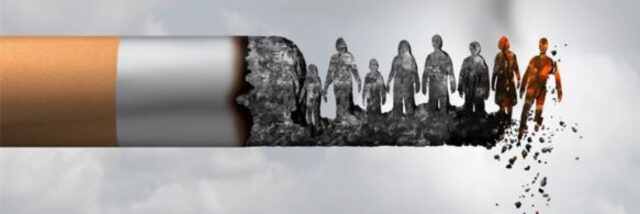No Smoking Day, observed annually on May 31st, highlights the dangers of smoking and the benefits of quitting. While the focus is often on smokers themselves, the dangers extend to non-smokers through passive smoking, also known as secondhand smoke. This article explores what passive smoking is, its health consequences, and steps to create a smoke-free environment for everyone.
What is Passive Smoking?
Passive smoking occurs when non-smokers breathe in smoke exhaled by smokers or smoke from burning cigarettes, cigars, or pipes. This involuntary exposure can happen anywhere, including:
- Homes
- Workplaces
- Public places (restaurants, bars)
- Even outdoors
Secondhand smoke is a complex mixture containing over 7,000 chemicals, including:
- Toxicants: These can harm various organs and systems in the body.
- Carcinogens: At least 70 chemicals in secondhand smoke are known to cause cancer.
Health Risks of Passive Smoking:
Exposure to secondhand smoke poses significant health risks for non-smokers, impacting various systems:
-
Respiratory System:
- Asthma and Respiratory Infections: Passive smoking can worsen asthma symptoms, increase asthma attacks, and raise the risk of respiratory infections like bronchitis and pneumonia, especially in children.
- Chronic Obstructive Pulmonary Disease (COPD): Long-term exposure can contribute to COPD, a group of lung diseases causing breathing difficulties.
-
Cardiovascular System:
- Heart Disease: Non-smokers exposed to secondhand smoke have a 25-30% higher risk of developing heart disease. This is due to damage to blood vessels, increased blood pressure, and reduced good cholesterol levels.
- Stroke: Passive smoking is linked to an increased risk of stroke by promoting artery blockage and restricting blood flow to the brain.
-
Cancer:
- Lung Cancer: Non-smokers exposed regularly have a 20-30% higher risk. Carcinogens in tobacco smoke damage lung cells, potentially leading to cancer.
- Other Cancers: Studies suggest a link between passive smoking and cancers of the throat, nasal sinuses, brain, bladder, rectum, stomach, and breast.
-
Impact on Children:
- Sudden Infant Death Syndrome (SIDS): Infants exposed to secondhand smoke are at a higher risk of SIDS, though the exact mechanism remains unclear.
- Developmental Issues: Exposure can lead to low birth weight, preterm delivery, and developmental problems. Children in smoking households may experience behavioral issues and learning difficulties.
-
Other Health Effects:
- Eye and Nasal Irritation: Short-term exposure can cause eye irritation, nasal congestion, and throat discomfort.
- Reproductive Health: Passive smoking can affect fertility and increase complications during pregnancy, such as preterm birth and low birth weight.
Related Post; Meek Mill Calls for Therapy in the Black Community: Social Media’s Impact on Mental Health
Protecting Yourself and Others:
- Create a Smoke-Free Home: Implement a strict no-smoking policy inside and encourage smokers to smoke outdoors, away from windows and doors.
- Support Smoke-Free Policies: Advocate for smoke-free policies in workplaces, public areas, and residential buildings.
- Educate and Raise Awareness: Inform others about the dangers of passive smoking to motivate smokers to quit and empower non-smokers to protect themselves.
- Use Air Purifiers: While not a complete solution, high-quality air purifiers can help reduce smoke particles indoors.
- Seek Support for Quitting: Encourage smokers to seek resources for quitting. Programs, counseling, and medications can significantly increase success rates.
Conclusion:
No Smoking Day serves as a reminder to protect everyone from the harm of smoking. By understanding the severe health effects of passive smoking and taking proactive steps to reduce exposure, we can create a healthier, smoke-free world.





